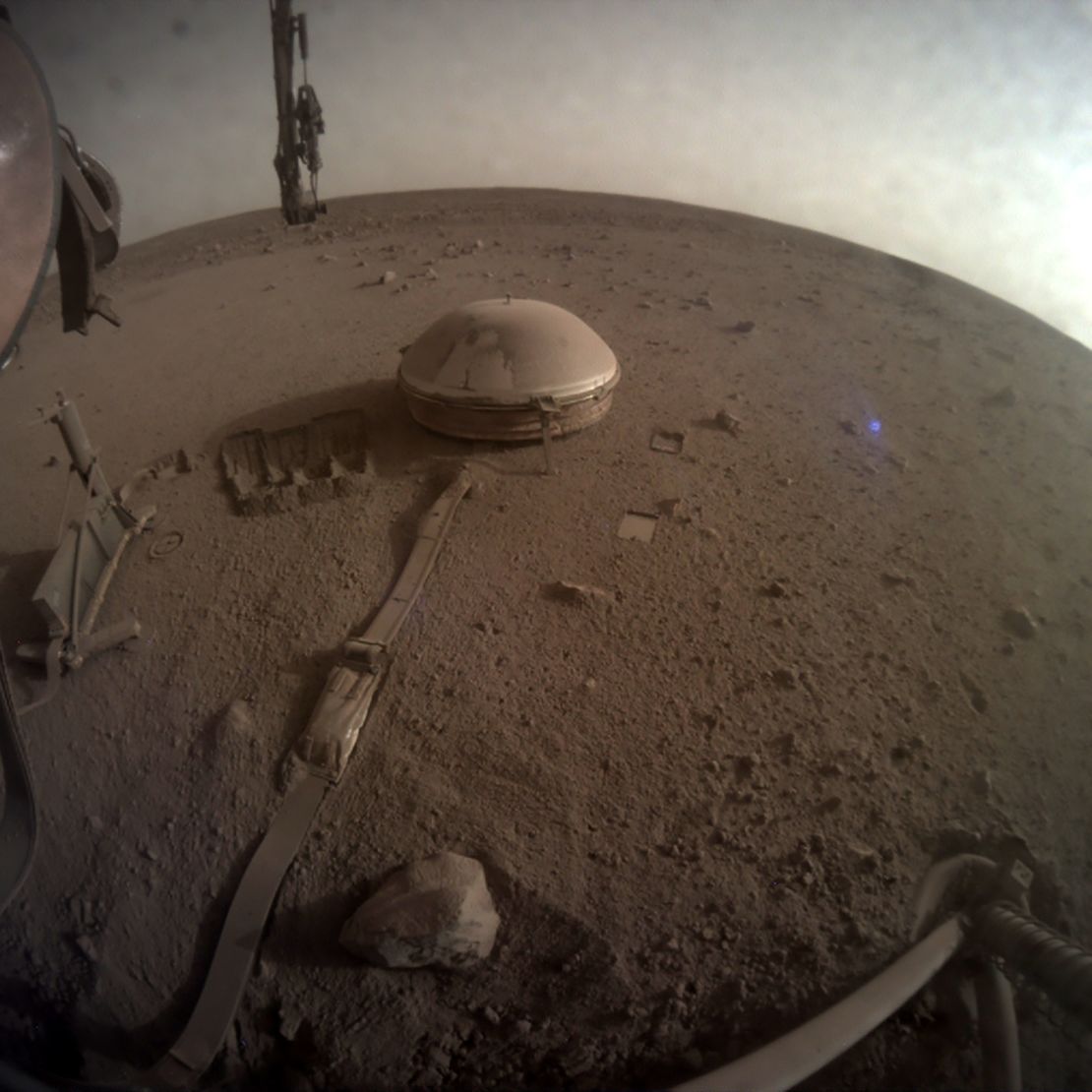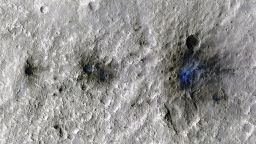Sign up for CNN’s Wonder Theory science newsletter. Explore the universe with news on fascinating discoveries, scientific advancements and more.
When quakes rumbled on Mars and a meteorite smacked into the red planet during the past four years, NASA’s InSight lander collected soundwaves that helped reveal secrets of the Martian interior.
During these events, InSight detected for the first time seismic waves traveling through the Martian core. Now, scientists have used the lander’s data to determine that Mars has a liquid iron-alloy core that also includes lightweight elements such as sulfur and oxygen, as well as smaller amounts of hydrogen and carbon.
Developing a greater understanding of the Martian interior can help scientists learn more about how rocky planets such as Earth and Mars form, how the two planets differ, and the factors that help make other planets habitable for life.
A study detailing the findings was published Monday in the journal Proceedings of the National Academy of Sciences.
“In 1906, scientists first discovered the Earth’s core by observing how seismic waves from earthquakes were affected by traveling through it,” said study coauthor Vedran Lekic, associate professor of geology at the University of Maryland, College Park, in a statement. “More than a hundred years later, we’re applying our knowledge of seismic waves to Mars. With InSight, we’re finally discovering what’s at the center of Mars and what makes Mars so similar yet distinct from Earth.”

Researchers analyzed how long it took seismic waves generated by one marsquake as well as a meteorite impact to travel through the Martian core, allowing them to estimate the core’s density and chemical composition.
Planetary core offers clues on evolution
Earth has a liquid outer core and a solid inner core, but the Martian core appears to be made entirely from liquid. Mars’ core is also slightly denser and smaller than scientists believed, with a radius of approximately 1,106 to 1125 miles (1,780 to 1,810 kilometers).
“You can think of it this way; the properties of a planet’s core can serve as a summary about how the planet formed and how it evolved dynamically over time,” said study coauthor Nicholas Schmerr, associate professor of geology at the University of Maryland, College Park in a statement.
“The end result of the formation and evolution processes can be either the generation or absence of life-sustaining conditions. The uniqueness of Earth’s core allows it to generate a magnetic field that protects us from solar winds, allowing us to keep water. Mars’ core does not generate this protective shield, and so the planet’s surface conditions are hostile to life.”
Mars currently lacks a magnetic field, but there are traces of magnetism that linger in the Martian crust. The traces lead scientists to believe that Mars likely once supported a potentially habitable environment, but evolved over time to become an inhospitable frozen desert.
“It’s like a puzzle in some ways,” Lekic said. “For example, there are small traces of hydrogen in Mars’ core. That means that there had to be certain conditions that allowed the hydrogen to be there, and we have to understand those conditions in order to understand how Mars evolved into the planet it is today.”
Initially, the InSight mission, the first to study the interior of Mars, was only supposed to last for about two years. But NASA extended the mission for another two years.
“The extra mission time certainly paid off,” said lead study author Dr. Jessica Irving, senior lecturer in Earth sciences at the University of Bristol in the United Kingdom, in a statement.
“We’ve made the very first observations of seismic waves travelling through the core of Mars. Two seismic signals, one from a very distant marsquake and one from a meteorite impact on the far side of the planet, have allowed us to probe the Martian core with seismic waves. We’ve effectively been listening for energy travelling through the heart of another planet, and now we’ve heard it.”
The InSight mission continued to collect data about Mars until the very end, falling silent in December 2022 after dust blocked its solar panels from receiving necessary sunlight. But the treasure trove of data the lander collected during four years on the Martian surface has changed the way scientists understand the red planet.
“InSight will continue to influence how we understand the formation and evolution of Mars and other planets for years to come,” Lekic said.





